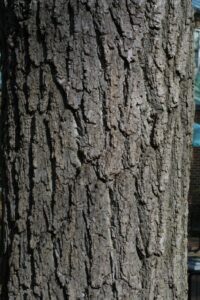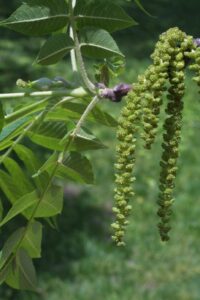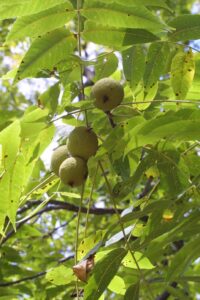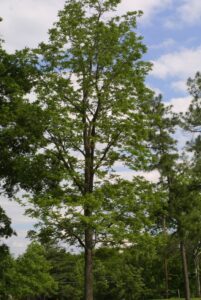Botanical Name:
Juglans nigra
Family Name:
Juglandaceae
Description:
Black walnut is a large tree with a straight trunk and oval to rounded crown. The nuts’ spicy odor and large feather-compound leaves help identify it. This tree needs to be planted with care, since it produces chemicals called juglones that stunts or kills other plants growing nearby.
Size:
75-100’
Habitat and Range:
Black walnut typically grows throughout the central and eastern parts of the United States. Black walnut is native from Massachusetts through southern Ontario to South Dakota south to Florida and Texas. It is typically found in rich woods, in valleys along streams and in open upland woods. This species prefers moist, rich, well-drained soils in full sun.
Attributes:
Black walnut leaves have 13 to 23 leaflets on green stalks. Leaves are late to emerge in spring and early to drop in fall. Fall color is an undistinguished yellow. The leaflets are pointed with toothed edges and have a strong aroma when crushed. The bark is sharply ridged, dark gray-black that roughly forms a diamond-shaped pattern. Yellow green flowers appear in late spring. The flowers give way to edible nuts, that are encased in a yellow-green husk. The nuts mature in fall, falling to the ground where the husks blacken as they rot away.
Wildlife Value:
The nuts are eaten by rodents including mice and squirrels. The leaves are eaten by the caterpillars of luna moths, regal moths, and others. The presence of such caterpillars naturally attracts many birds.
Did you Know?
- Black walnuts are used in baking, pickled whole, and eaten raw. It would probably be eaten by more people if getting the nutmeats out of the nut were a little easier.
- The wood from this tree is highly valued for a number of uses including cabinets, furniture, gunstocks, and fine veneers. It is perhaps the best furniture wood available.
- Native Americans used the nuts for food and boiled the tree sap to make syrup.
Benefits to Our Community (based on carbon dioxide sequestered, storm water runoff avoided, and air pollution removed each year):
Over the next 15 years, this tree will give back $4,005 worth of benefits to our community.




